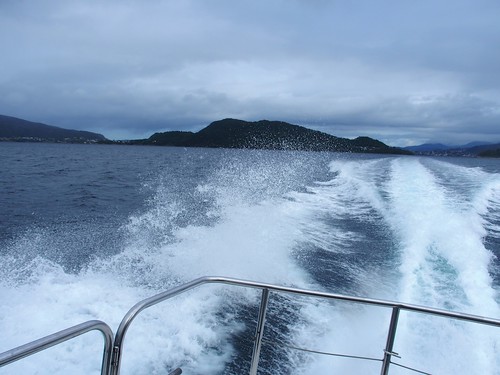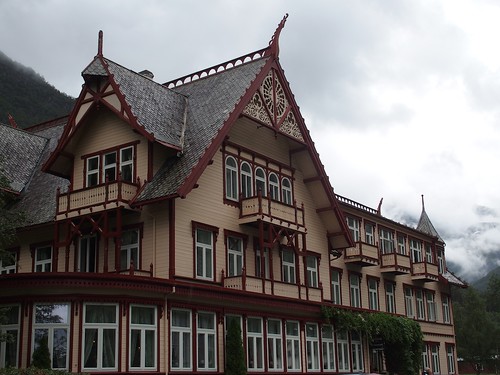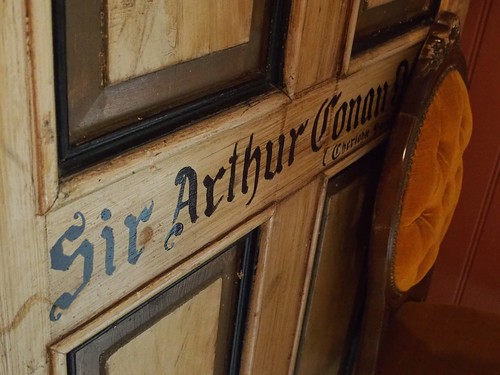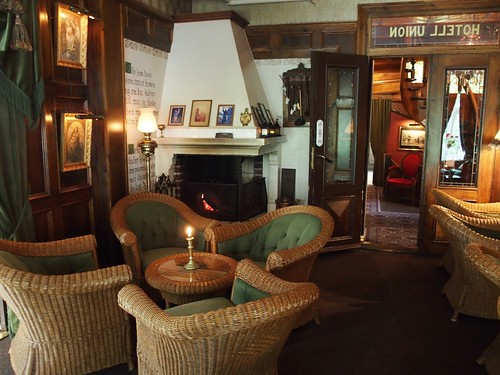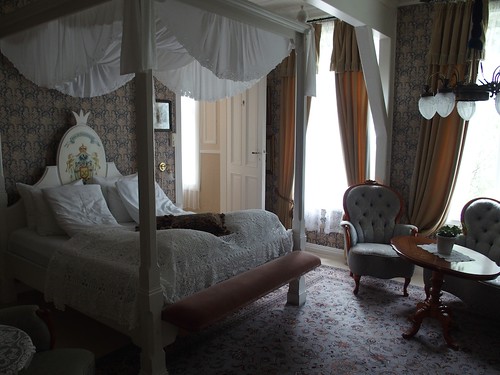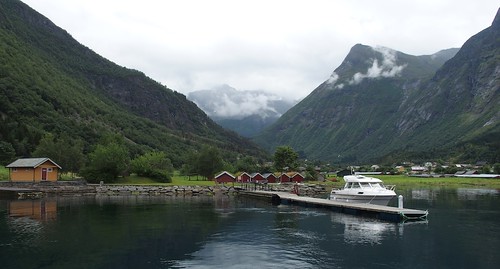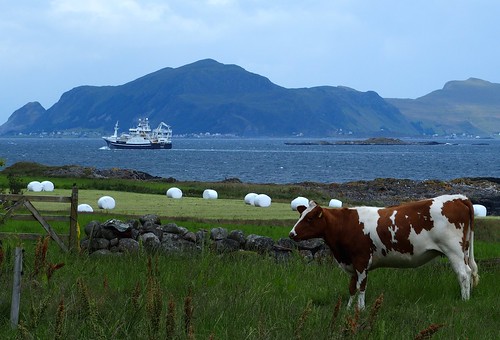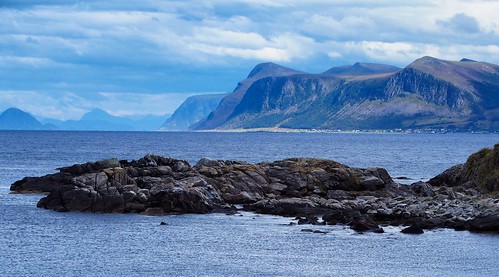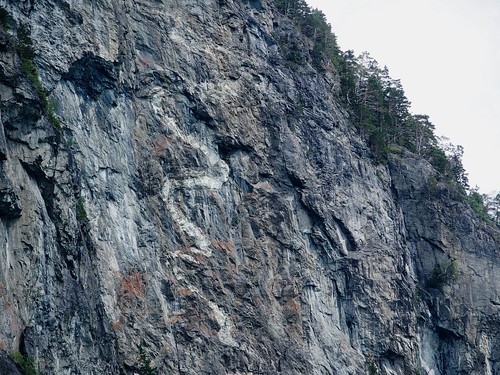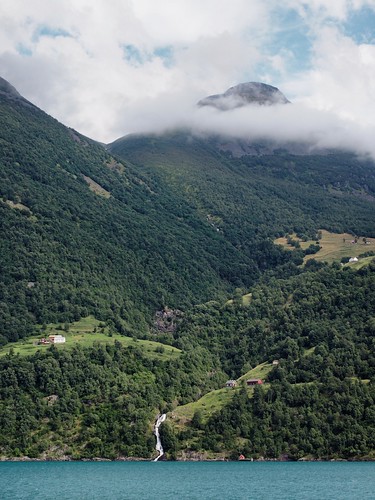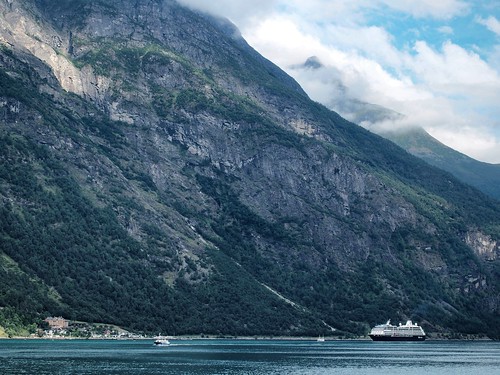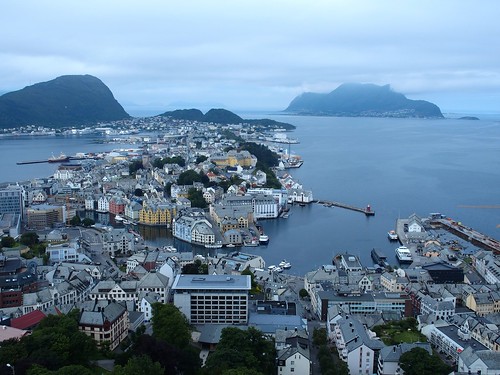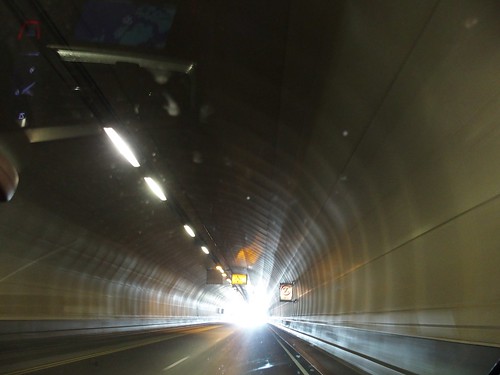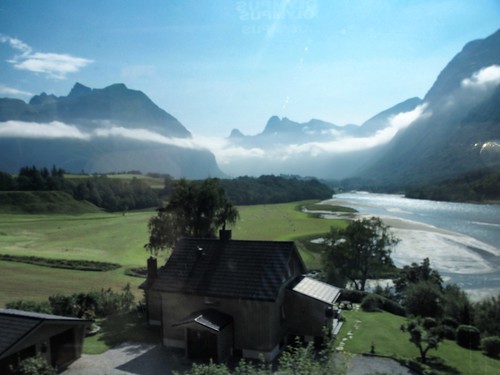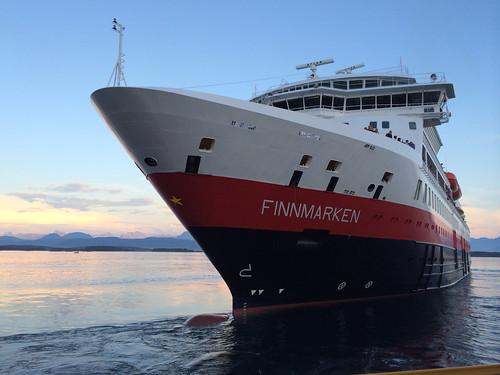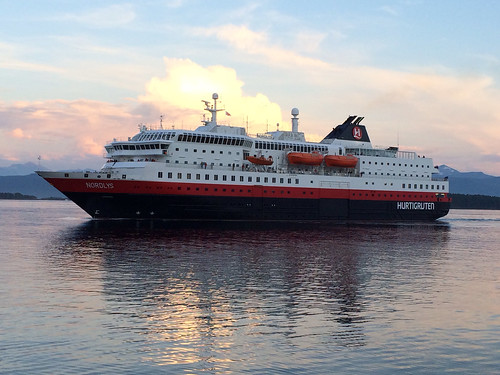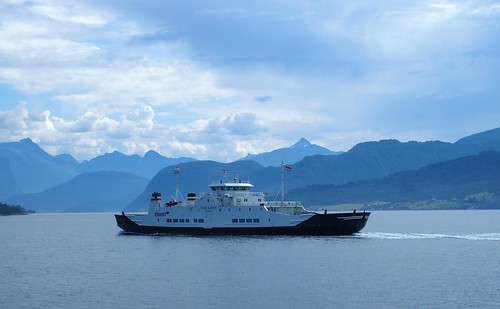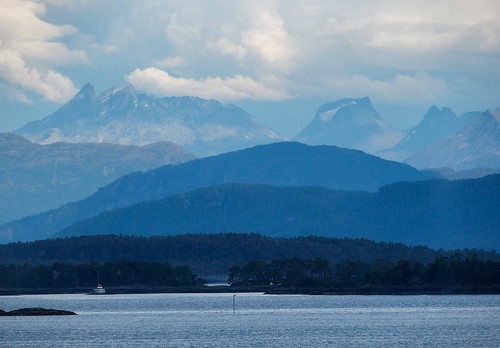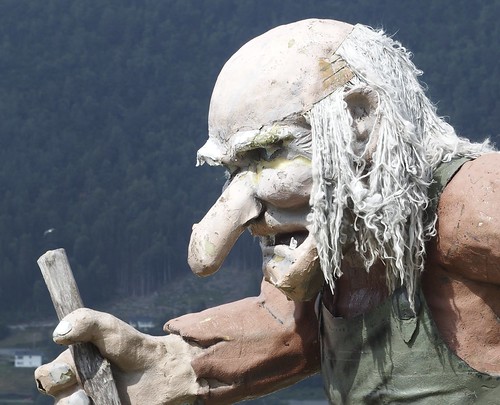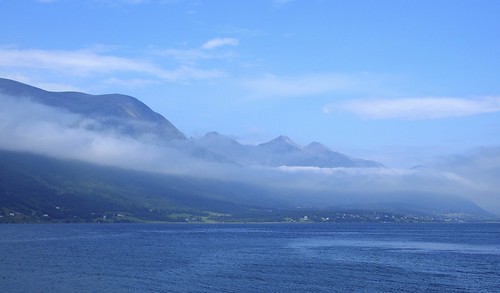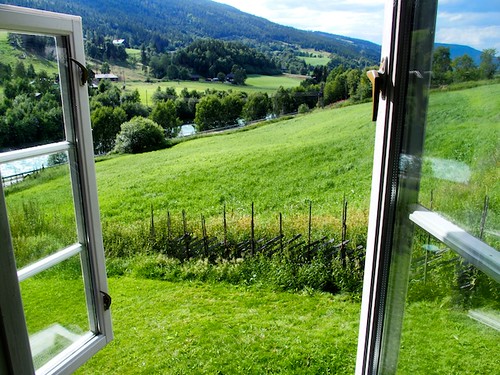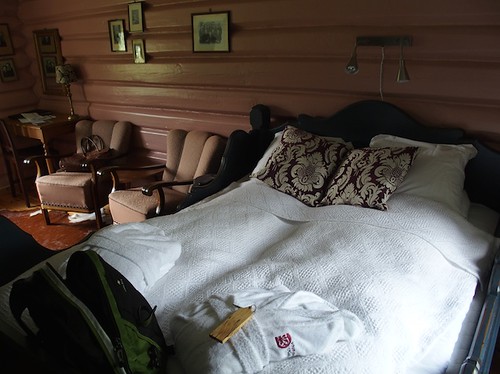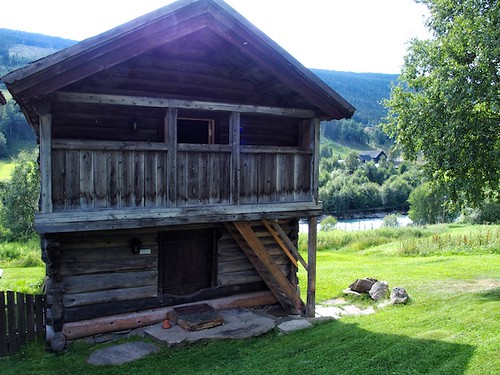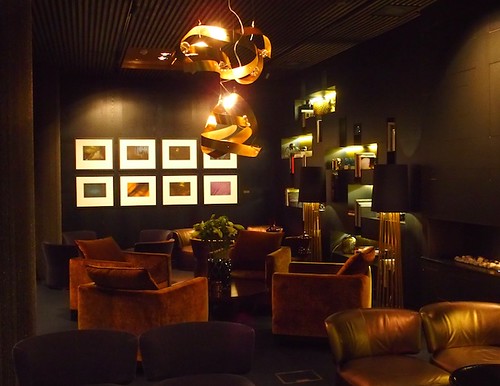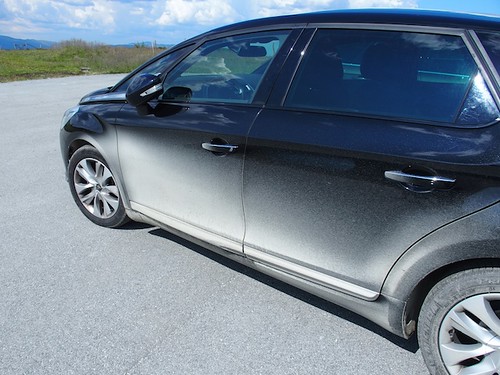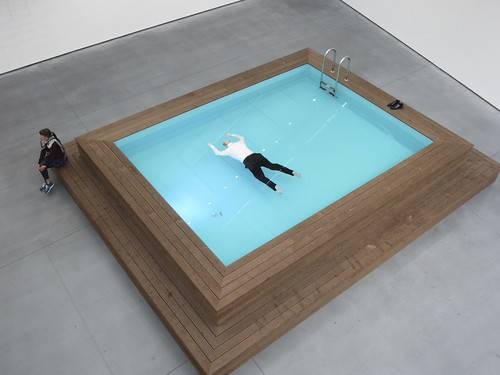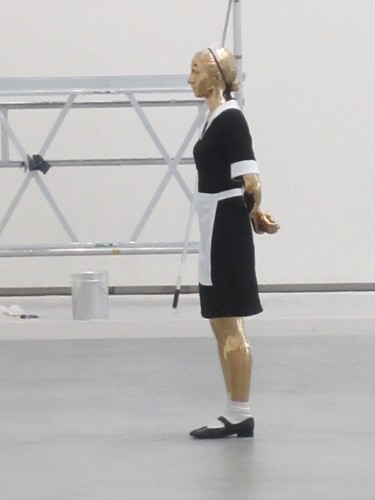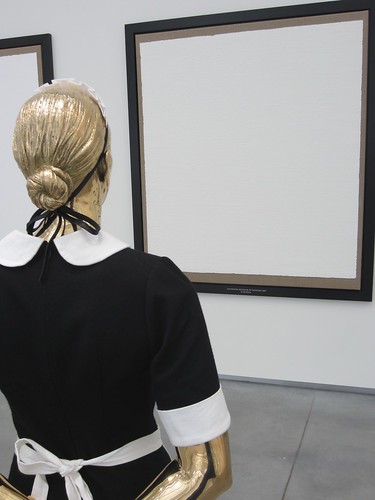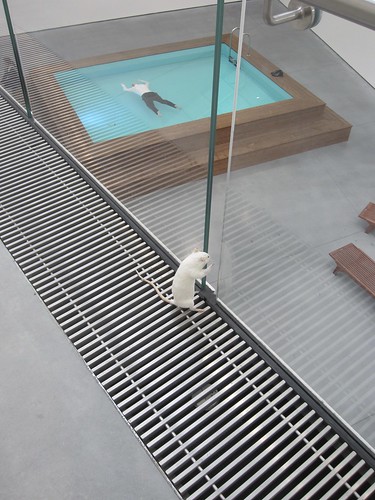
I noticed an unusual car whilst we were staying at the wooden hut.
An adjacent hut had a sort of Jaguar-looking sporty car parked outside, except it wasn't a Jaguar. I'm used to seeing most fancy cars around London, so I assumed this was a Jaguar with a slightly plastic-fronted body-kit makeover.
Then, the next day I saw another one. Same shape, but white instead of red. I was mildly intrigued.
It was when we were in a temporary stopping place by the Vinmonopolet the next day that I realised what I was seeing. There was a row of pseudo petrol pumps and another one of the cars. It was a Tesla. An electric car recharging from a special high power charger.

The frequency of sightings made me think that the area was perhaps a factory or special test facility for the cars. To see three in a couple of days seemed unusual. Then I saw another three on our next journey. All the
Tesla Model S.
It turns out that this Tesla car is the top-seller of all cars in Norway. It beats even the usual Ford Something. In fairness, it's a small population, and only needs about 1,500 cars to be top of the pops, but it is still noteworthy that a premium-priced electric sports car is achieving this. One reason is the huge Norwegian price incentive because it is electric.
In Norway, a mid-range VW Golf costs about double the UK price because of Norway's taxation. I should maybe mention that a glass of beer is about £10/$16 so there's a general price hike on many products in any case.
Move upmarket with cars and a midrange petrol BMW 5 is around US$100k-120k. So in the middle/upper market the Norwegians look closely at the huge tax relief on a high performance luxury 5 door electric sports car.
The Tesla would be around $220k in Norway if it had the same taxes applied as for petrol cars, but becomes about the same price as the Beemer because no tax is levied. Add the Norwegian fringe benefits for electric vehicles of no toll road charges, driving in bus lanes, free parking, free ferries and only about $700 of fuel (electricity) per year in a car with a 220-320 mile range. No wonder well-heeled Norwegians have created a 5 month waiting list for the car. And no wonder I'm seeing them daily when driving around in Norway.
Norway sells around 12% electric cars already although it is harder to explain how it is selling more than twice as many Tesla as, say, the conventional Volkswagen Golf.
Curiously, the styling isn't ground breaking, probably more like what one 'expects' a sports car to look like, rather than something from science fiction. I guess that's just the packaging for the market and will no doubt evolve as people become used to the idea of EVs.
There needs to be critical mass and developed infrastructure for EVs to work and the Tesla may be a start, although there's still a pretty steep entry ramp even with the circa $130k per car Norwegian subsidy.
